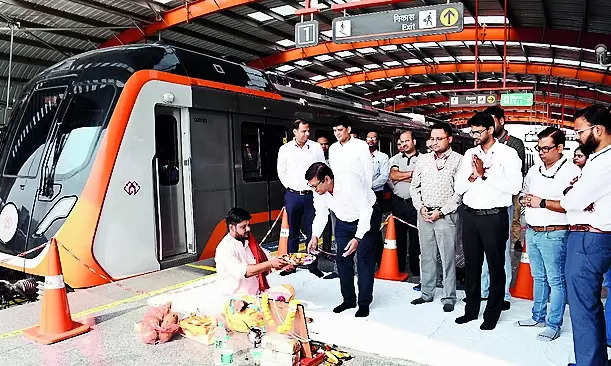
Operation of metro trains started on ATO (Automatic Train Operation) mode on the Priority Corridor (IIT to Motijheel) of Kanpur Metro. The operations commenced on Sunday.
Earlier, metro trains were running in ATP (Automatic Train Protection) mode, which was equipped with features like automatic braking to avoid any kind of accident keeping in view the safety of passengers.
Along with this, in the operation of trains under this mode train operators used to play an important role. In the ATO (Automatic Train Operation) mode most of the procedures related to train operation will be automatic. With this, the safety of metro commuters will become better than before, and the trains will also become more efficient in terms of punctuality. In this mode, since most of the tasks related to operations are automated, the possibility of any human error will also be almost negligible.
The operation in ATO mode was inaugurated after a puja at IIT Metro station. The ATO (Automatic Train Operation) mode has been thoroughly tested before starting operations. In this mode, trains operate under the supervision and control of the ATP (Automatic Train Protection) system without any intervention from the Train Operator.
That is, the dependence on the Train Operator for operating trains is reduced and most of the operations-related activities like motoring, braking, platform duty, the opening of doors at designated places on the platform, etc. become automatic. Keep in mind that despite almost all procedures related to operations being automated, the doors of metro trains will still be closed manually by the train operator for the safety of passengers.
It is noteworthy that metro services are divided into different categories on the basis of operation technology, which is called Grade of Automation. Equipped with state-of-the-art and latest technology, Kanpur Metro trains are Grade of Automation 3 (GoA 3) category trains.
Trains of this category can run in ATO (Automatic Train Operation) mode without a train operator through a Communication Based Train Control System (CBTC) signaling system. Along with this, to ensure automatic management of train movement, an Automatic Train Supervision (ATS) system is also used, which continuously monitors the movement of trains through automatic route setting and automatic train regulation and adjusts its speed in abnormal conditions.
All these features inherent in ATO mode make the operation of metro trains even safer than before and the possibility of any kind of human error becomes almost negligible.









